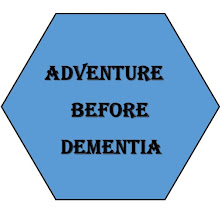Today is the day for exploring the rainforest of Daintree National Park. This rainforest is considered a unique ecological niche - it is the only place on earth where the forests are much like they were 100 million years ago. Several of the first, most primitive, flowering plants grow here - including, the dinosaur tree - the world's oldest flowering tree, which has been around for 135 million years. This forest is like a botanical Jurassic Park, with plant species so primitive that they scarcely differ at all from their prehistoric ancestors. This region represents about one-one thousandth of Australia's land, but hosts 40% of its plant species, 25% of its reptiles, 20% of its birds, and 33% of its marsupials.
We went to the Cooper Creek Wilderness area and went for a guided hike through the forest. We learned the three defining features of the mature rainforest: buttressed trunks, a dense mat of roots, and a huge tangle of vines; this place has them all. The buttresses seem to help support the trees, as well as capturing water. The roots and vines help stabilize the whole plant community during storms.
We searched high and low in hopes of spotting a cassowary, a large flightless bird that is found nowhere else in the world. This property is known to have three adult birds and several chicks, and the pathway was littered with its droppings, but we didn't spot one. We did learn about how they are endangered and that they are considered a keystone species since so many plant species depend on them for distributing their seeds. We also got a taste of Aussie roadsign humor.
After our walk, we stopped at the Beachfront Bar and Cafe for tea, coffee and muffins. It was a nice break and a beautiful beach.
Onward now to see what we can learn on the water – time for a boat ride on Cooper Creek, an estuarine creek (salty at the mouth) in search of salt water crocodiles. We saw dozens of species of mangrove lining the creek and all manner of birds, but it didn't look good for crocs until we were just about to turn around to head home. And right on the bank was a big female croc, just soaking up the sunshine - and keeping a very careful watch on us. The boat captain said these crocs know that he and his vessel are not a threat, but nobody was volunteering to get too close.


Walking back to the coach, we spotted the blue Ulysses butterfly, also known as the Blue Mountain Swallowtail. It has a wingspan of nearly 6 inches and an iridescent electric blue color.
After lunch, we piled into two 4-wheel drive vehicles and traveled deep into Daintree National Forest, driving along the Bloomfield Track, a dirt road that runs 20 miles into the forest's interior. Our aim was to visit an Aboriginal community 1.5 hours away.
We stopped along the road to see a huge strangler fig tree, and as everyone headed in that direction, eagle-eye Vicky saw a flash of blue color in the forest. Look again - it was a male cassowary and a 6-month old chick. The adult bird stayed in the edge of the woods, but the youngster was pretty curious about all these humans clustered around, clicking away.
Getting closer - now we can see the Bloofield River below the road.
We finally reached our destination, the Aboriginal community of Wujal Wujal, home of the Kuku Yalaji people who have lived in this region for tens of thousands of years. Here we met three members of the Walker family who live in the community and now lead walks to a waterfall upstream (www.walkerfamilytours.com). The waterfall and surrounding area has spiritual significance to the native people, but these were secrets they could not share with outsiders. Interesting that they would guide us to the waterfall and tell us the names of plant and animal life along the way, but they couldn't tell us why the site was sacred to them.
We spotted another crocodile, this one sunning on a rock. The locals seem unconcerned by its presence, but the government authorities had posted warning signs.
The waterfall was nice, even if it wasn't running at full speed. The rainy season starts here in a few weeks and there will be much more water everywhere.
We sat on the rocks and talked with the women for a while - our last chance to interact with Aboriginal people. These folks are quite determined to find a way to live with feet in both cultures, but it's clear that they too are struggling with alcoholism among some of the men and young people. It's equally clear that they don't often get a fair shake from the white man - there's a long way to go to sort out the damages done and find a suitable future that works for everyone.
On the way back down the mountain, we stopped at the Woobadda River, one of the multiple streams we had to ford. This time we pulled off near a deep pool so our fearless leader and some of his followers – including Dennis - could go for a quick swim. The rest of us enjoyed tea and biscuits (cookies) while watching the spectacle.

And one last stop was at a beach (whose name is now forgotten), for a look at real solitude.
















